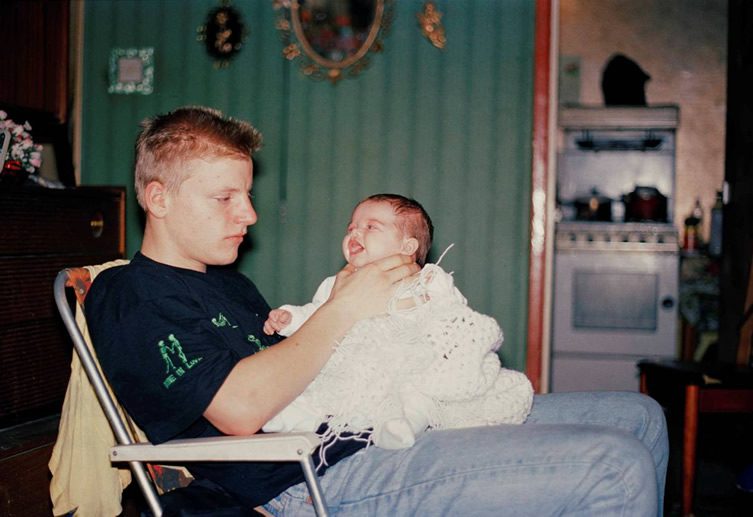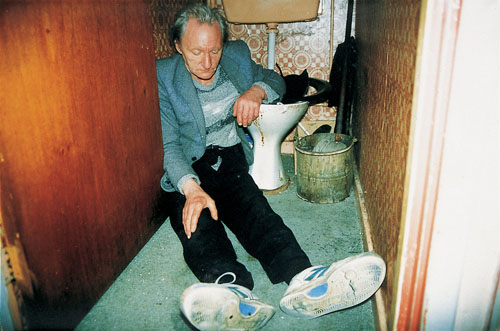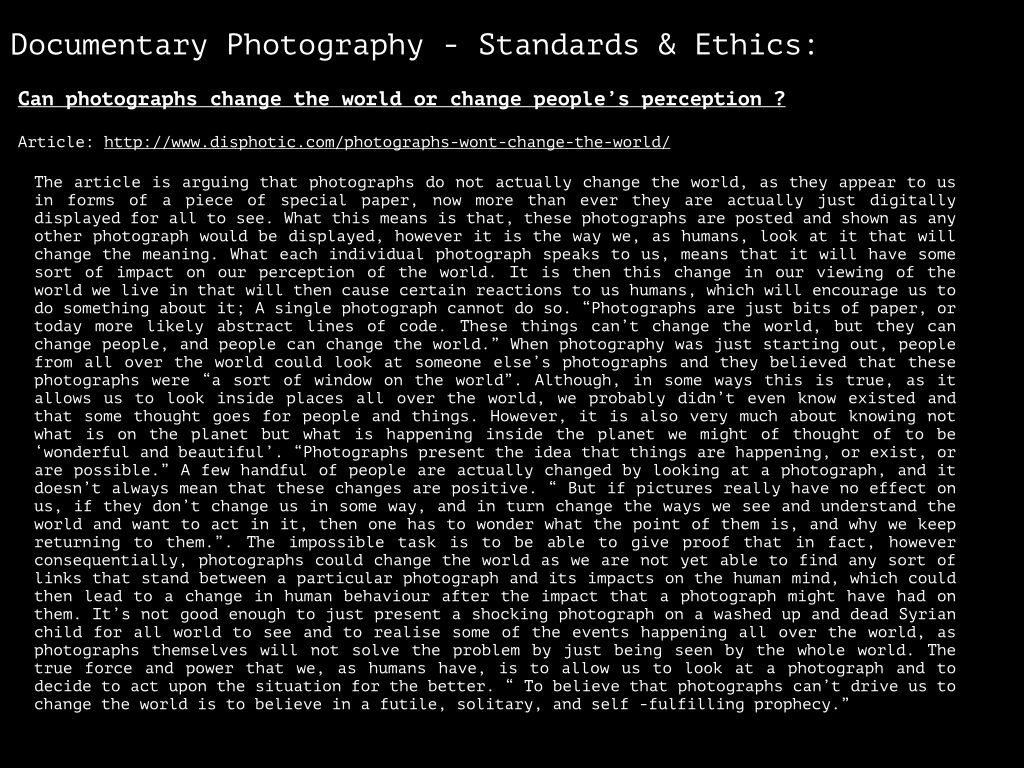
Bio
Richard Billingham is an English Photographer, born in Birmingham in 1970, the eldest of two children born to Ray, a factory worker and Liz, a housewife. Billingham is from a working class background, and when he was 10 the family faced great hardship when Ray lost his job, forcing the family to sell their home and move into council housing. Ray became an acoholic, forcing Liz to eventually move out. Richard’s younger brother Jason was taken into care, leaving Richard on his own to care for his father.

“Jason says Ray’s a Laugh but doesn’t want to be like him” – Ray with Jason
Ray’s a Laugh
Billingham was a keen artist with a talent for drawing and painting. Billingham gained a place at the Bournville College of Art, studying painting. He decided to create a series of paintings based on his father Ray, documenting his struggle with alcoholism and depression for one of his exams. Billingham could not get Ray to pose for long enough, so decided instead to photograph Ray as an aid to help his painting, using cheap film and processing. When Billingham presented some of his paintings to an art examiner, he asked Billingham if he coud see the aids he used to make the images. Billingham showed the examiner his photographs and he was immediately impressed by what he saw, advising Billingham strongly to forget about painting and concentrate on photography instead.

Billingham’s art examiner was more impressed by the photograph used to base the paintings on then the paintings themselves
Over the course of the next 6 years, Billingham continued extensively to photograph Ray, as well as his mother Liz who moved back in to the family home, and his younger brother who returned from care. Billigham also transferred from Boruneville College of Art to the University of Sunderland, obtaining a degree in Fine Arts. In 1995, Billigham’s first photographic exhibition was held in The Antony Reynolds Gallery London. entitled ‘Ray’s a Laugh’. The series was recieved both positive and negative responses, but overall was an overwhelming financial and critical aclaim. The photographs from this exhitibition was made into Billingham’s book of the same title, the defining work of Billingham’s career. This book shot Billingham to instant fame as a photographer. In 1997 ‘Ray’s a Laugh’ was featured in a major exhibition entitled ‘Sensations’ at the Royal Academy in London.

Ray’s a Laugh was a brutally honest insight into the struggles of working class British life during the 1990s
One of the major criticisms Bilingham received for ‘Ray’s a laugh’ was the claim that his work was nothing more than a shameful exploitation of his family. Billingham was only 26 at the time ‘Ray’s a Laugh’ was released and so some critics, perhaps unfairly attacked Billingham, citing his work as ‘insensitive’ and ‘exploitative’. In reality Billingham had no idea how much success he would generate, and creating the series did in fact have a profound emotional impact upon him. Billigham has defended himself over this issue numerous times, denying he exploited he parents.
Later Career
After this initial success Billingham explored landscape photography, incorporating his unique style to highlight the landscape of modern Britain with a similar sense of honesty and realism explored in ‘Ray’s a Laugh’. A series of Billingham’s landscape work was made into a book entitled ‘Landscapes: 2001-2003’. Other works credited to Billingham include; Fishtank 1998; 1998, Liz Smoking 1998, Tony Smoking Backwards 1998, Ray in Bed 1999 Playstation 1999; and Dewi Lewis, 2008.

Billigham is a lecturer in Fine Art Photography at the University of Gloucestershire and a third year tutor at Middlesex University.
www.saatchigallery.com/artists/richard_billingham.htm















